The business of stylish Italian hotels
In The Room With Valeriano Antonioli, CEO of Lungarno Collection
Hello everyone, happy Wednesday.
If you’re new here, “In The Room” is a column dedicated to the stories of hoteliers and restaurateurs doing things in a uniquely interesting way. I’m very excited to share a conversation I had with Valeriano Antonioli, CEO of Lungarno Collection, which is the Ferragamo family’s portfolio of hotels in Italy. I especially love the Portrait Milano and often recommend it to friends coming to Milan. I also have spent a lot of time writing this newsletter at their hotel bar. It’s one of those hotels that doesn’t scream “luxury”, but is an example of how Milanese restraint, an eye for detail, and elegance come together to create a very special place. I hope you enjoy this conversation as much as I did.
Valeriano Antonioli is one of Italy’s most respected hoteliers and a driving force behind the evolution of modern Italian luxury hospitality. As CEO of the Lungarno Collection, the hotel group owned by the Ferragamo family, he has led its transformation from a Florentine heritage brand into an internationally-recognized portfolio that blends craftsmanship, culture, and service.
Since taking the helm in 2010, Antonioli has expanded the group to six properties: Hotel Lungarno, Gallery Hotel Art, Hotel Continentale, and the Portrait hotels in Florence, Rome, and Milan. The Portrait brand, launched in 2012, represents the group’s highest expression of hospitality, combining the intimacy of residential living with the precision and artistry of Italian design.
Portrait Milano, the newest addition, is the group’s most ambitious project to date. Located in the heart of Milan’s fashion district, it occupies a restored 16th-century seminary—one of the oldest in the world—and introduces a new public piazza connecting Via Sant’Andrea to Corso Venezia. The 73-room hotel, designed by Michele Bönan, features restaurants including 10_11 and Beefbar, the first urban spa by The Longevity Suite, and retail spaces such as Antonia Milano and SO-LE STUDIO, making it both a landmark and a social hub for the city.
Under Antonioli’s leadership, Lungarno Collection has reached record performance, with revenue of about €30 million in 2022 and plans to surpass €70 million as the Portrait brand expands into new markets.
In this conversation, Antonioli reflects on the decade-long journey behind Portrait Milano, the evolution of the brand, and his philosophy on leadership, profitability, and the art of Italian hospitality.
The Portrait Hotel Milano occupies the site of one of the oldest seminaries in the world. I believe you had to secure a lease with the Archdiocese of Milan. Tell us the story about how you secured that site. What were the challenges in getting that lease deal done with them and how did you navigate that?
To tell the story properly, we have to go back to 2012. That was when we decided to create the Portrait brand by converting two residential properties, what we’d now call branded apartments, into hotels: Portrait Roma and Portrait Firenze.
After those successes, I started scouting across Italy for new opportunities. I came across the old seminary site in Milan. It took a couple of attempts before I was able to visit, but when I finally did, I was completely awestruck. I think you probably had the same reaction when you first walked in: just wow. No one expects to find such a monumental building hidden in the center of Milan.
A little history helps explain why it’s so special. When it was built 500 years ago, Milan became known as La Città delle Colonne, the City of Columns, because of the many columns of the seminary. And if you think about the city’s fashion district today, Italians call it il Quadrilatero, or “the quadrilateral.” That name actually originates from this very building, which, centuries ago, stood as a square landmark defining that area. Over time, urban development obscured it from view, but the name remained.
Back to our story: when I first met with a representative of the seminary, he told me very clearly that they had no interest in selling or leasing the property, and that it would never become a hotel. That was in 2013. We finally opened the doors in December 2022. So it was a ten-year journey.
It took us two years just to convince the Church to consider transforming such a sacred place, the world’s largest and second-oldest seminary, into a hotel. Once they agreed, they organized a competition through JLL, which ran for another two years and attracted many major hospitality brands. We were fortunate to win. Then came two more years of negotiations and permitting before we could even begin the renovation. And, COVID forced us to suspend construction for almost two years. But in the end, we made it.
There were two major challenges along the way. The first was convincing the Church to allow such a transformation. The second was internal: at that time, our company was still a four-star brand. We hadn’t yet evolved into the five-star level you know today with Portrait. So convincing everyone internally to invest such a large amount of money in a project that was several steps ahead of our existing reality was a big leap. But we believed in it, and here we are.
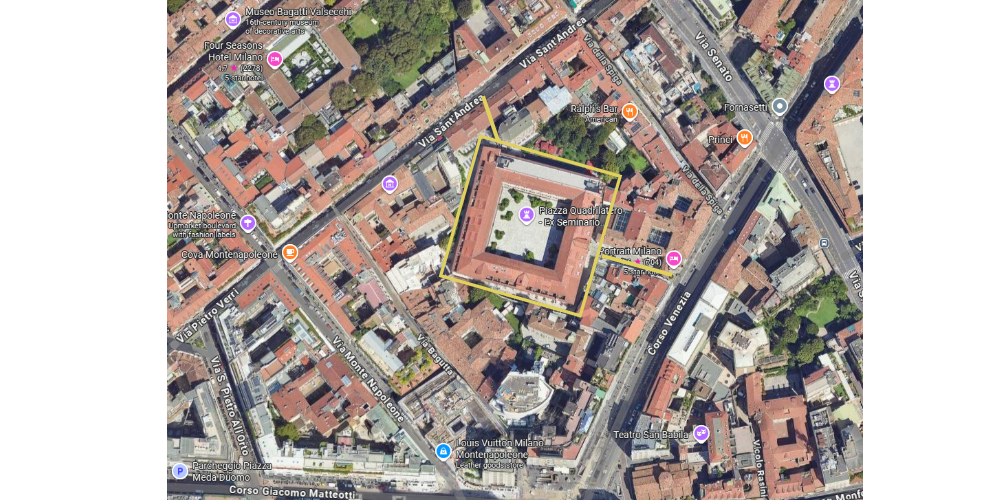
Wow - I love that story because in Italy, a lot of great real estate is owned by the church or the Vatican, and they’re not the easiest to negotiate with, and it often takes a very long time.
But you know, Nadine, I actually found the representatives from the Catholic Church on the other side of the negotiation table to be extremely intelligent, knowledgeable, and ultimately very supportive of the project. In my experience, they were genuinely great people to work with.
And we were also lucky, though I like to say that luck is where preparation meets opportunity. At that time, both the Sovrintendenza and the Comune di Milano were very supportive and proactive in helping us make the project happen. It was really the perfect moment. As you probably know, the urban planning climate in Milan is quite different today, but back then, the timing was very much in our favor.
What makes that hotel so special is that it has a lot of public spaces, which is very unusual for luxury hotels, especially these five-star brands. They usually want to keep the public out and make it very private and exclusive. Talk to us more about that decision to open that courtyard, and if you think having public spaces drives hotel performance.
I think the answer to your last question really depends on the context. In our case, yes — having a public piazza absolutely contributes to the hotel’s success.
One of the key reasons we won the competition with the Catholic Church to secure the lease was our vision for opening the piazza, connecting Via Sant’Andrea with Corso Venezia, and transforming it into an almost public square. You know, the Quadrilatero della Moda, the fashion district, didn’t actually have a true piazza. So I saw an opportunity to create one; not just for the hotel, but for the entire neighborhood.
We imagined this space hosting cultural events, art exhibitions, fundraising galas, commercial activations, fashion shows, and even a tennis match. And nearly everything we envisioned has come to life. We’re still missing two things: an ice-skating rink (which we’re working on), and a friendly fundraising football match between Milan’s two teams, Inter and AC Milan, but everything else has happened.
At that time, many people in Italy were talking about private clubs, and a few hotels launched them. But I never believed that idea fit the Italian way of life. In Anglo-Saxon culture, clubs are institutions. In Italy, we’re used to walking into the local bar or café and meeting everyone; no membership required. So instead of creating something private and exclusive, we went in the opposite direction. We built what I like to call inclusive exclusivity.
Everyone is welcome to cross the piazza, visit the restaurants, or simply enjoy the atmosphere. And it worked beautifully. The space has hosted countless events and brought new energy to an area that used to be completely quiet after 7 p.m. Before Portrait Milano, the fashion district would empty out in the evening — now, it’s alive again. It’s a destination not just for dining and shopping, but for cultural life.
Because our food and beverage offerings are strong, and because we embraced the local community, the people of Milan embraced us in return. They became our ambassadors. And when that happens — when locals start speaking proudly about your hotel — you suddenly have hundreds of thousands of people acting as your best sales team.
That’s really the secret behind Portrait Milano’s success. Despite being a small Italian company, not a giant like Marriott, Four Seasons, Mandarin Oriental, Armani, or Bulgari, we’ve managed to outperform the competition. Through the piazza, our events, our restaurants, and the boutiques, we’ve become the hotel for the people of Milan.
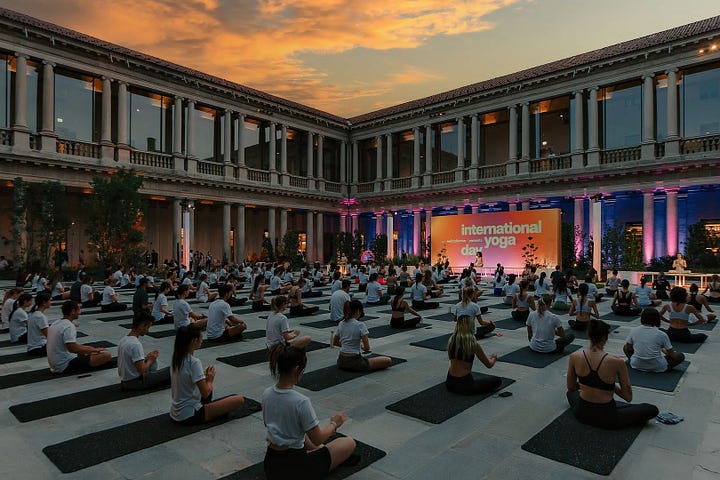
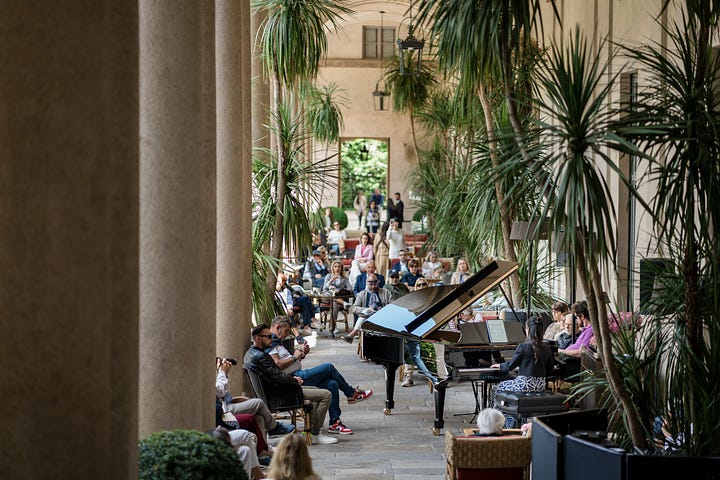
I want to double click on the F&B and the retail because I think the mix is actually quite interesting. So you have 10_11, which you operate yourself. And then you have Rumore and Beef Bar, which is an international restaurant group.
Then for retail: you also have Antonia, which is a great multi-brand fashion store. Tell me more about how you selected your F&B and retail partners for the Portrait because it’s a really important component of the overall brand for this hotel.
Nadine, that’s a great question — because you can only build a true destination through food and beverage. Otherwise, you remain just a hotel.
The restaurant decision was a long and thoughtful process. Over the years, I interviewed many Michelin-starred chefs, but unfortunately, none of them quite fit. They were all very focused on themselves; their personal brand, their name, their recognition. And we weren’t looking for a me; we were looking for a we.
Then I started exploring international concepts and eventually met Riccardo Giraudi, the owner of Beefbar. He’s Italian but based in Monte Carlo. I remember visiting his Beefbar there, and his father, who was 86 at the time, personally showed me around, talking me through their philosophy and their restaurants. I immediately felt a connection. They were Italians with an international concept, and we shared the same sense of elegance, taste, and hospitality.
I also loved that Beefbar was unapologetically a steakhouse. It was a moment when everyone was trying to move away from combustion engines to electric cars, when diesel was being criticized, and even meat eaters were being viewed as unfashionable. And I thought: there will always be people who want to enjoy a great steak. Beefbar celebrates that, offering exceptional cuts from all over the world, and it just clicked.
Rumore came later, also from the Giraudi Group, and complements Beefbar beautifully.
As for 10_11, that’s our own concept, and we always knew we wanted to operate it ourselves. It’s not just a restaurant, it’s an integral part of the hotel. We manage events, room service, the minibar, and the rhythm of daily hotel life, so it made sense to keep that in-house. Our goal was to create something recognizably Italian and distinctly Milanese, with dishes that feel familiar yet elevated.
One example is our Pasta in Bianco. It’s not really an invention; every Italian grew up eating pasta in bianco as a teenager. But we reinterpreted this simple, nostalgic dish into something memorable. Guests love it.
And then there’s Antonia. That partnership came together much more easily. I had made a list of potential retail collaborators, met Maurizio from Antonia, and immediately felt aligned. I didn’t meet anyone else after that. I knew right away that Antonia was the perfect fit.
You have a track record of increasing revenue and EBITDA meaningfully in your past hotels that you’ve worked with. Now that inflation is on top-of-mind for a lot of hoteliers, what is your approach to driving profitability?
I think that, for us hoteliers, especially in the five-star and super-luxury segment, the post-COVID period has been both fortunate and fascinating. We’ve seen an extraordinary increase in rates. In some cases, they’ve nearly doubled compared to 2019 levels. In Milan, for example, the average rate for a super-luxury hotel rose from around €850 to €1,700, and it happened without much resistance from guests.
Whether this will last or eventually stabilize, no one can say for sure. But what’s clear is that the number of ultra-wealthy travelers in the world continues to grow every day, and this particular segment of hospitality exists to serve them.
We’ve also seen the emergence of a new layer within the five-star category. Pre-COVID, a hotel charging €800 a night was considered top-tier. Now, that price point represents more of a “second tier,” while true super-luxury hotels — those in exceptional locations, managed by outstanding teams and brands — have moved beyond that.
Looking ahead, I expect the market will stabilize. We won’t see the kind of exponential growth we had immediately after COVID, but I believe profitability will remain strong. If we can maintain today’s margins over the next three or four years, we’ll be in a very good position.
The only real uncertainty comes from the global political and economic environment. It feels, in a way, as if things have become a bit unpredictable, almost as if the world has lost some control over events. You never know what headline you’ll read tomorrow.
And yet, what’s remarkable is how quickly people adapt. When the war in Ukraine began, for example, reservations slowed for a few weeks, but then travel resumed as usual. The same happened with subsequent global conflicts. What might once have disrupted travel for months or years now seems to have far less impact. People continue to travel, and to live, much as they did before.
What’s the ideal staff to guest ratio to deliver on the Portrait experience?
It varies based on how many amenities and facilities are connected to the hotel.
For example, at Portrait Roma, which is a very small boutique property with just 14 rooms and no restaurant, we operate with around 25 team members. That gives us a staff-to-room ratio of about 1.5 to 1.
At Portrait Firenze, we maintain a similar ratio for the rooms, but we also employ about 45 additional people to manage Caffè dell’Oro, our restaurant.
In Milan, it’s a different scale entirely. We have more than 170 people dedicated just to 10_11, and that number grows even higher when we host events.
So, generally speaking, for a five-star luxury operation like ours, you’re looking at a ratio of roughly 1.5 to 2 team members per room plus F&B staff depending, of course, on the complexity and size of the property.
This year alone, there have been so many new luxury hotels opening in Europe. Every single major flag wants a piece of Lake Como, just as an example. I’m curious as to how you’re approaching maintaining visibility to prospective guests and if there are any aspects of consumer psychology that you leverage to position the Portrait brand.
That’s a great question. I think Portrait Milano represents a major step forward for us in terms of brand development.
When you experience Portrait Milano — not just the hotel itself, but the entire ecosystem of the restaurant, the shops, the events, the service, the food — you immediately feel part of a community. And once you’ve lived that experience, you might ask yourself, “Why would I stay anywhere else in Milan?” The location, the atmosphere, and the sense of belonging make it truly unique.
What’s interesting is that many guests now associate that feeling with the Portrait brand as a whole. In Portrait Firenze, for example, it’s on a different scale, but the principle is the same. You’re right on the Ponte Vecchio, in the very heart of Florence, completely immersed in the life of the city. And in Rome, even though the property is smaller, the same intimacy and connection are there.
So what we’re seeing now is that many travelers discover the brand through Portrait Milano and then go on to stay at Portrait Roma or Portrait Firenze. Little by little, that’s how we’re building real brand value: not through advertising or slogans, but through lived experience.
You can’t simply sit around a table and decide what your brand should be and then try to push that out to the public. In our case, we let people live the Portrait experience, especially in Milan, and then they naturally associate that feeling with who we are. Today, we are a niche Italian luxury hotel brand, owned and operated by an Italian family.
You’ve worked mainly in the US and Italy, and also Russia and Germany. What are the biggest differences that you’ve noticed in the hospitality business between US and Italy?
When I worked in the United States, I was the managing director of a project in Paradise Valley, Phoenix, where we built the Montelucia Resort, a $300 million development with 300 rooms and villas.
One of the main differences I noticed is on the construction side. In Italy, we build with cement, stone, and solid materials, while in the U.S., construction often relies on lighter methods: a lot of dry wood and prefabricated structures. So it’s a completely different technique and mindset.
More broadly, I think our architects and engineers in Italy have an exceptional attention to detail. In our projects, we’ve never approached construction as a quick capital-gain operation — build fast, sell fast, move on. Instead, we take the time to make sure every element is as perfect as possible. If you look closely at Portrait Milano ,the rooms, the restaurant, the materials — you’ll see that every detail is carefully thought out and beautifully executed, not just on the surface but deep down in the craftsmanship.
That’s really the key difference: in Italy, there’s an obsession with beauty and artisanal quality. Much of the furniture and fixtures in Portrait Milano are handmade, or nearly so. There’s a soul in the way things are created.
Otherwise, the fundamentals of the hotel business are quite similar everywhere. You always need an outstanding general manager, someone who’s a true leader, capable of motivating and inspiring the team. And you need to find the right people, train them well, and help them develop the awareness and knowledge to take excellent care of guests, while having strong distribution, direct sales, PR, branding, & marketing.
Perhaps the main distinction, beyond craftsmanship, is in the workforce culture. In Italy, salaries in hospitality tend to be relatively low. In the U.S., especially in restaurants and bars, tipping changes everything. A bartender in New York can earn ten thousand dollars a month or more. In Italy, tipping is not a typical custom, so we have to find other ways to motivate and reward our people.
Is there anything in particular that you have found that works for both attracting and retaining really great talent?
That’s a great question, Nadine. When we began the pre-opening phase, we started with a core team of about 50 people. For six months, we invested a lot of time not just in training, but in building a real sense of community.
We organized activities that had nothing to do with hotel operations. We played rugby together, we went bowling, we spent time sharing our values, our purpose, our mission, and the reason we were all there. Even now, we still do these things. Just last week, I went bowling with our team in Florence, and a few months ago went to ride go-karts with the Milan team.
That early period was so important because it created strong bonds and a shared sense of ownership. And the result speaks for itself: the people who went through that pre-opening experience are still with us today, every one of them. The ones who joined later, after that initial phase, didn’t all develop the same attachment to the brand or to the team. Some did, some didn’t.
So what we learned is that if you invest the right kind of time upfront — during pre-opening, before the rush of operations begins — you can truly build loyalty. We opened three years ago, and the fact that our original core team is still together is quite remarkable.
We’re getting close to time. I want to ask you the final two questions. How did you come up with the name ‘Portrait’?
That one was pure luck. The name was already there. It actually came from the Lungarno Collection, version 1.0, before I joined the company. At the time, Portrait Roma was known as Portrait Suites, which referred to a collection of branded residences.
Later, when we began developing the idea of creating a new super-luxury hotel brand, I brought in a British branding agency to help us find the right name. They looked at everything and said, “You already have it. Portrait is perfect.”
It was simple, elegant, and universally understood across most Western languages. So we kept it. In the end, it turned out to be one of the easiest and best decisions we ever made.
I think it’s such a great name. It evokes the portraits painted by the old Masters during the Italian Renaissance period – they were very detailed. I think it’s a great analogy for the detail you put into your hotels.
You know, Nadine, if you look closely at our logo, you’ll notice something hidden inside the Portrait frame: two ballerina shoes facing each other. It’s almost invisible; if no one tells you, you’d probably never notice it. But yes, our logo actually features two ballerina shoes within the portrait.
Why is that?
Because we belong to the Ferragamo family, so we thought it was a very nice collection.
That makes a lot of sense. Final question: do you have any advice for young hoteliers?
I have advice not only for young hoteliers, Nadine, but for all young people who are still searching for their purpose in life. It’s something I once read in The Alchemist by Paulo Coelho: if you know where you want to go, the universe will conspire to help you get there.
That’s really the key: to know where you want to go.
A career in hospitality can be extraordinary. In my own case, I grew up in a small mountain town in the Alps. One day, our school visited a beautiful hotel in Milan, and I decided then and there that I wanted to become the general manager of the best hotel in the world. It didn’t matter where. I was just a teenager, but over the next 30 years, that dream became real.
This profession has taken me all over the world. I’ve worked in Germany; I was even in Berlin when the Wall came down. I spent three years in St. Petersburg, Russia, during the years after Perestroika and Glasnost. I worked in England, in California, and now, for more than a decade, in Italy. Through all those experiences, I’ve grown both professionally and personally.
Hospitality is a beautiful career because it gives you the chance to see the world, and to have the world come to you. You meet incredible people, you learn constantly, and you evolve every single day.



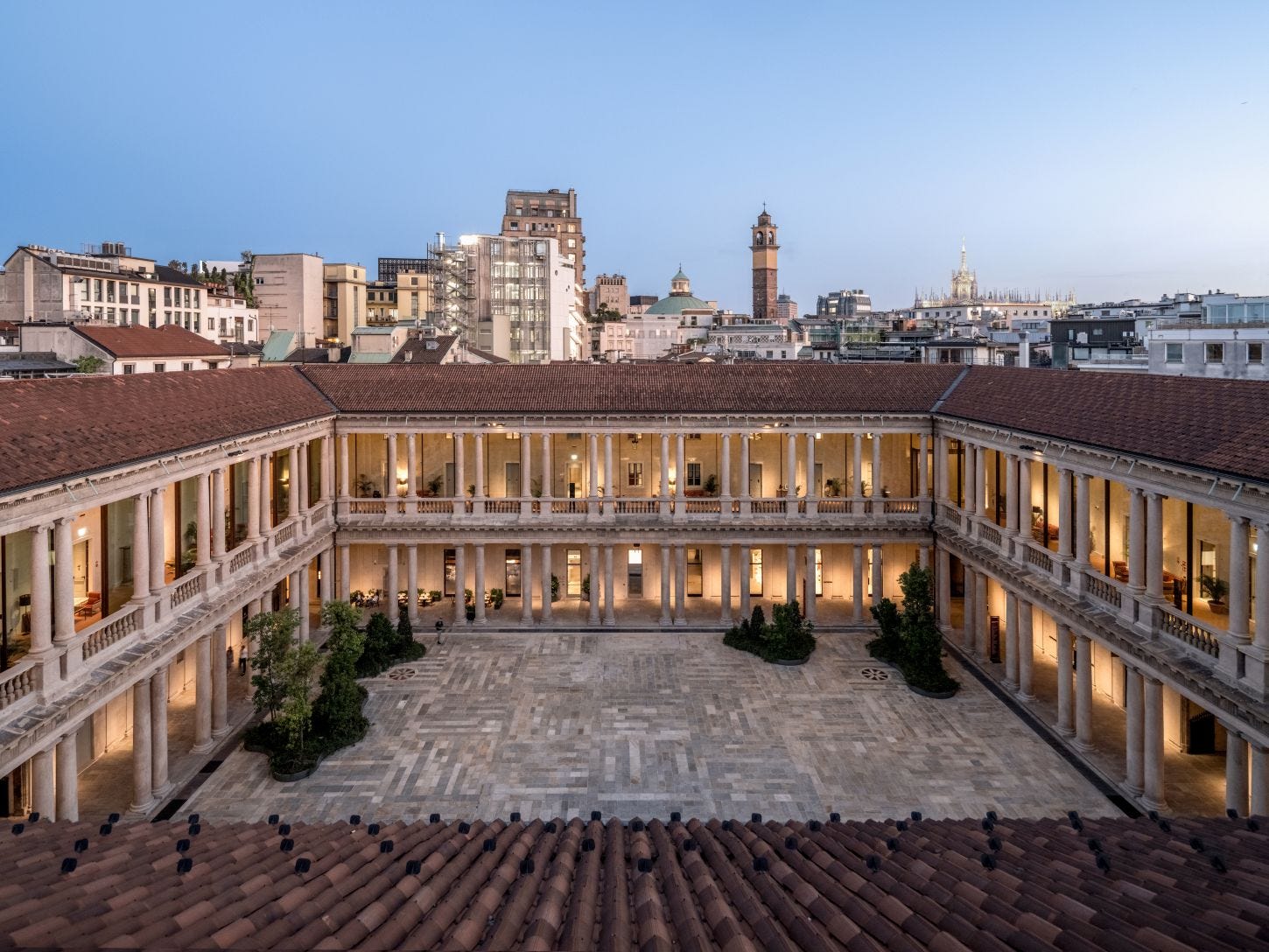
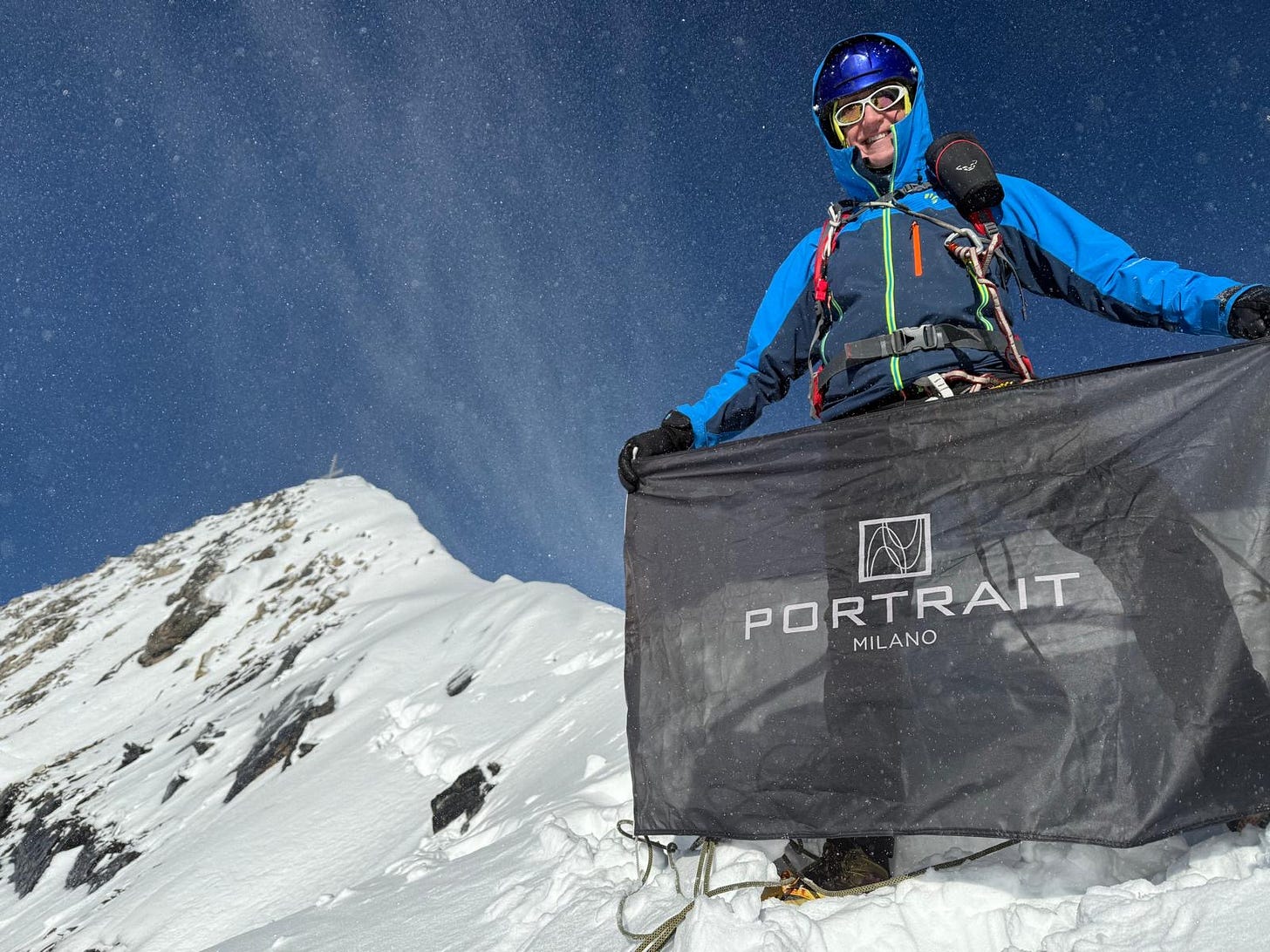
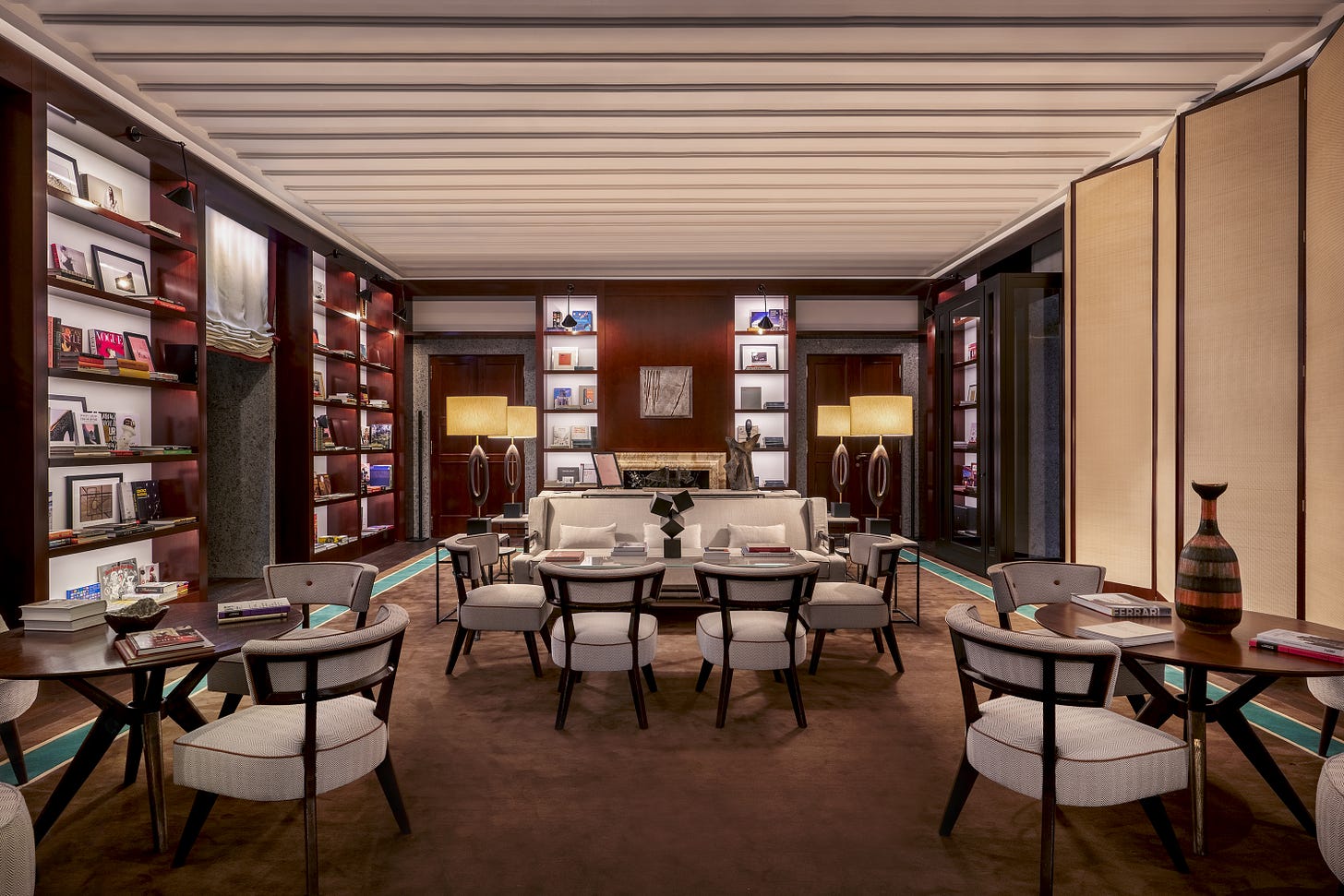
I've never seen such a complete example of "inclusive exclusivity." HBR should do a case study.
Loved this read